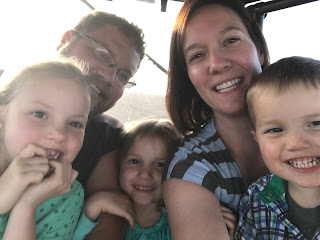Earlier this month, Philips County was hit hard with a devastating wildfire that destroyed many acres of farmland, multiple herds of cattle, and people's homes. It has been amazing to watch the local communities (and even people from far away) come together to help those affected, and it really makes us count our blessings and appreciate the field work that we are able to begin.
The official first day of spring is tomorrow (March 20th), and the weather here has really started to warm up which means it is time to get back to work. Spring field work is not necessarily as stressful as planting and harvest seasons, but it is still incredibly important. The increase in technology helps make this process run a little smoother, too. With the help of multi-task implements and GPS, time and energy spent prepping the field decreases.
The official first day of spring is tomorrow (March 20th), and the weather here has really started to warm up which means it is time to get back to work. Spring field work is not necessarily as stressful as planting and harvest seasons, but it is still incredibly important. The increase in technology helps make this process run a little smoother, too. With the help of multi-task implements and GPS, time and energy spent prepping the field decreases.
There are a variety of different methods for field prep, and they vary depending on what was planted the previous year, what will be planted in the new season, and personal preference. I will go ahead and do my best to explain two of the methods used on our farm.
2016 Beet Field to 2017 Corn Field
The ground that the beets were in last season is hard and compact but relatively free of other debris, so most of the work involves loosening the dirt and prepping it for the next crop. However, there is a delicate balance when preparing the field to maintain the most nutrients and moisture. First, Boots uses an implement called a ripper to break the ground apart. Next, he will use a finisher which levels and smooths the field. After that he will pass through with a strip-tiller. The strip tiller rips and fertilizes in a zone preparing a seed bed. This implement essentially does the work of two because it allows us to add the needed nutrients to the soil and also forms the rows needed for planting. Finally, the field will be ready for planting.
 |
| Tractor with the ripper |
 |
| Close up of a ripper blade |
2016 Corn Field to 2017 Beet Field
Corn stalks leave a lot of debris which requires a few more steps. This year, we contracted out our stalks for a bailing company to cut, bale, and use/sell. Then, we used an implement called a disc to disc under any left behind debris. The next steps mimic the previous field: strip-till then plant.
Thanks to GPS, Boots can perform field work relatively hands-free which means Bubs gets to tag-along more often or sometimes all five of us will squeeze into the cab. This is just the beginning of the season, though, so stay tuned for updates on planting and to watch the crops grow.
Corn stalks leave a lot of debris which requires a few more steps. This year, we contracted out our stalks for a bailing company to cut, bale, and use/sell. Then, we used an implement called a disc to disc under any left behind debris. The next steps mimic the previous field: strip-till then plant.
 |
| Future Farmer |
Thanks to GPS, Boots can perform field work relatively hands-free which means Bubs gets to tag-along more often or sometimes all five of us will squeeze into the cab. This is just the beginning of the season, though, so stay tuned for updates on planting and to watch the crops grow.
 |
| Family time in the tractor |

Comments
Post a Comment